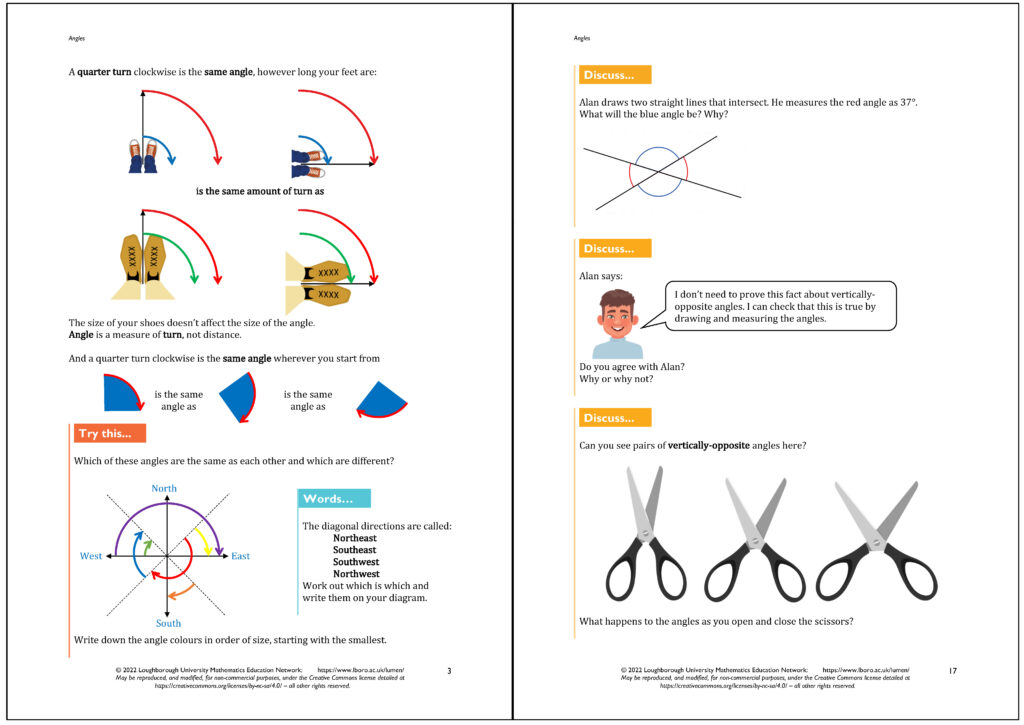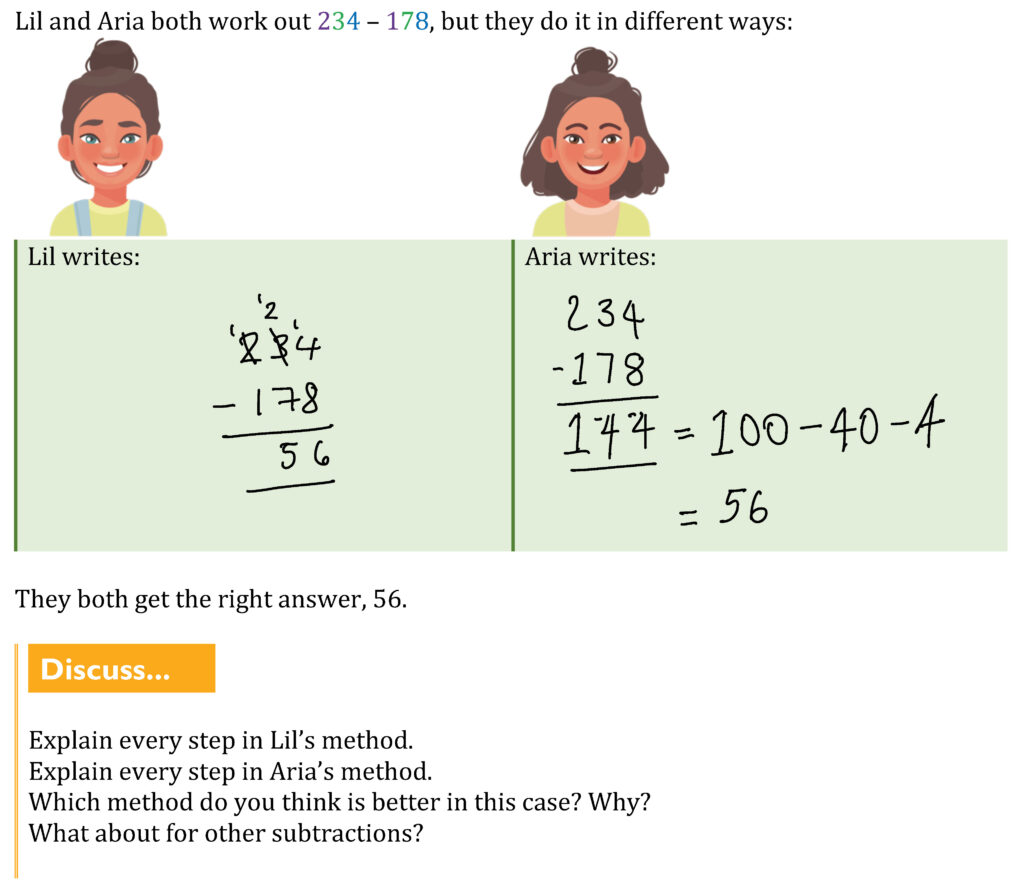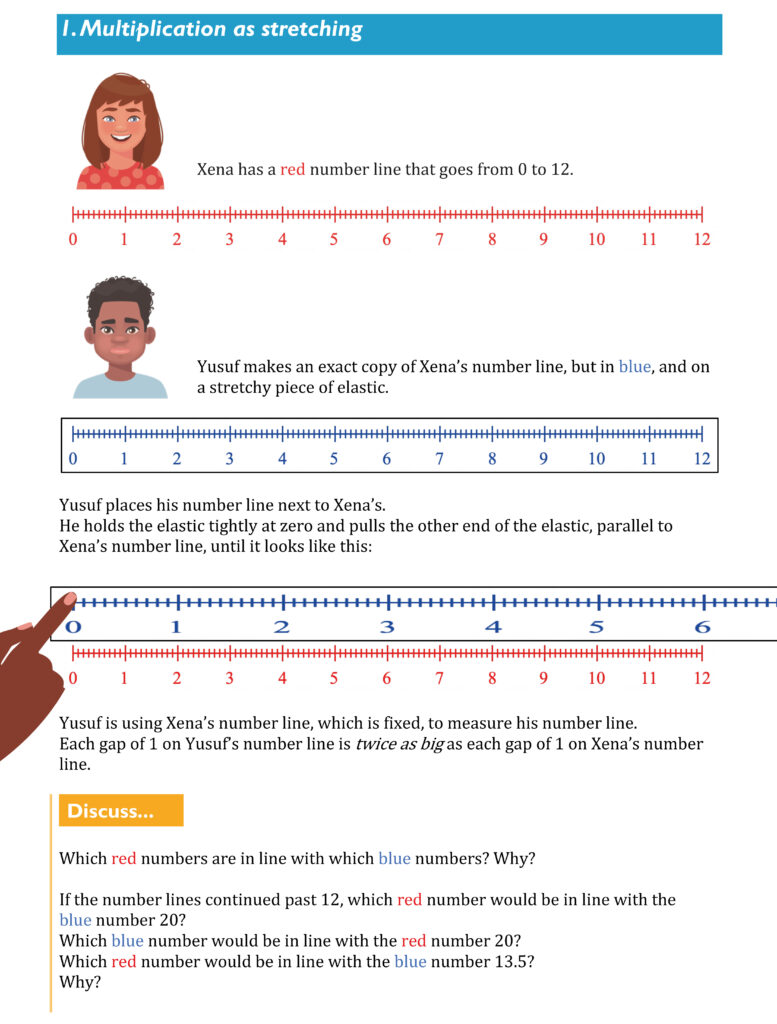The Launch of the LUMEN Curriculum
Written by Dr Colin Foster. Colin is a Reader in Mathematics Education and interested in educational design in mathematics. He is the Director of the Loughborough University Mathematics Education Network (LUMEN), and Lead Author of the LUMEN Curriculum. There is a link to LUMEN at the end of this blogpost. This article is edited by Dr Bethany Woollacott.
Introduction
Over the last few years, the principal focus of the Loughborough University Mathematics Education Network (LUMEN) has been on designing a complete, fully-resourced, research-informed, free mathematics curriculum for schools. We’re very excited that this is now complete and available on the LUMEN website. In this blogpost, I will outline our thinking behind these resources, as explored in more detail in our paper on the design principles and our more recent paper on the challenges of applying some of these principles (both linked at the end of this blogpost). I will also explain what the LUMEN Curriculum looks like and how we envisage it being used.
Why more mathematics teaching resources?
The world is awash with mathematics teaching resources, so what is our excuse for creating yet more? Indeed, some of the resources out there are of exceptionally high quality and have been very influential in our work. However, the majority of what is freely available online is low-quality. Many busy teachers sit up late at night trying to separate the diamonds from the glass. Even if they manage to find some high-quality resources for tomorrow’s lesson, there is the problem of coherence: “a collection of great tasks does not necessarily add up to a great collection of tasks”. A whole bag of individually great resources does not necessarily provide a great collective experience for students.
“A collection of great tasks does not necessarily add up to a great collection of tasks”
Some schools avoid this endless search for individual resources by purchasing a commercial scheme, such as a set of textbooks. However, these materials are often also perceived to be of poor quality, and they are rarely informed by research or trialled in real classrooms with real teachers. Although they present with a superficial consistency in terms of page design, on closer inspection they may be no more coherent than the individually-sourced materials. Ideas are often poorly connected and organised to support students’ learning across different topics and successive school years1.
Research-informed, free and editable
In the Centre for Mathematical Cognition, we are fortunate to have the largest team of researchers focused on mathematics education anywhere in the world. This has enabled us to draw on research from across mathematics education, cognitive science and educational design to produce a highly research-informed Curriculum1.
“In the Centre for Mathematical Cognition, we are fortunate to have the largest team of researchers focused on mathematics education anywhere in the world.“
Funding from Research England has enabled us to make these resources available completely free of charge. School mathematics department budgets are tight, and it can be frustrating when a department’s main expense is a set of textbooks that perhaps they do not even like very much. The LUMEN Curriculum is completely free and easy to access – with no annoying login required.
Another unique feature of the LUMEN Curriculum is that it is completely editable (Creative Commons CC BY NC SA), giving teachers agency to edit the resources to suit their context. This contrasts with commercial resources, which are locked as pdfs or printed pages, leaving teachers powerless even to correct egregious errors. Teachers often say about materials, “I like it, but…”, suggesting that they would use it or like it better if they could change something. It is not just about quality but suitability for the context. Most educational resources are “Take it or leave it“. The LUMEN Curriculum is “Take it or leave it … or adapt it and improve it”, allowing teachers to make changes however they wish.
Editability also raises exciting possibilities for schools to easily trial different versions of the Curriculum with different classes. For example, we use colour purposefully throughout many of the units in the Curriculum. But how effective is this? Schools can easily ‘Select All’ and change everything to black, and trial this version with one class against the colour version with another class, collecting local evidence of ‘what works’ in their context.
What does the Curriculum actually look like?
We have tried to make the materials easy to read and pleasant to look at while applying principles from cognitive science. For example, we have used images where they support learning but have avoided redundant pictures that could be distracting2. We also include lots of ‘Discuss’ boxes, which are intended for the teacher to use with the whole class, with students possibly responding on mini-whiteboards. These are interspersed with ‘Try this’ boxes for students to work on independently.

We use a fixed set of diverse, friendly student characters throughout the materials. These characters often model being wrong. We want students to see that making mistakes is OK and that mistakes are something to learn from. Often the fictional students disagree about things and the real students have to sort out what is going on. Or the fictional students do things in different ways, enabling the real students to make sense of what the fictional students have done, and decide which approach they prefer in different situations and explain why.

Throughout the Curriculum we use the number line as our primary representation. We have written in detail3 about why we use this in preference to other common representations of number, and we argue for the advantages of a single main representation of number, rather than lots of switching about. We see multiplication as stretching the number line and multipliers as perhaps the biggest single idea across the Key Stage 3 (age 11-14) curriculum.

Although we build on the foundations students have laid at primary school, we start a long way back, to cater for students who are not yet secure with important ideas. We anticipate that teachers will make the judgement to omit things that are too basic for their students, but we would rather provide too much than leave teachers searching for supplementary material to fill gaps.
The availability of manipulatives and technology varies dramatically from school to school, and we have approached this by making almost everything do-able without. However, we have often suggested where practical equipment can be used, and we link to free or widely-available software such as GeoGebra or spreadsheets for many of the tasks. In particular, the main Algebra units are highly based on the free Grid Algebra software, which is easily accessible from any browser. (Links to Grid Algebra and the recent CMC blogpost on Grid Algebra are below).
Please spread the word about the LUMEN Curriculum among schools and teachers and let us know what you think using the link below!
The development of the LUMEN Curriculum has been funded by Research England through the Centre for Mathematical Cognition.
References
1. Foster, C., Francome, T., Hewitt, D., & Shore, C. (2021). Principles for the design of a fully-resourced, coherent, research-informed school mathematics curriculum. Journal of Curriculum Studies, 53(5), 621–641. https://doi.org/10.1080/00220272.2021.1902569
2. Foster, C., Woollacott, B., Francome, T., Shore, C., Peters, C., & Morley, H. (2024). Challenges in applying principles from cognitive science to the design of a school mathematics curriculum. The Curriculum Journal. Advance online publication. https://doi.org/10.1002/curj.249
3. Foster, C. (2022). Using coherent representations of number in the school mathematics curriculum. For the Learning of Mathematics, 42(3), 21-27.
Centre for Mathematical Cognition
We write mostly about mathematics education, numerical cognition and general academic life. Our centre’s research is wide-ranging, so there is something for everyone: teachers, researchers and general interest. This blog is managed by Joanne Eaves and Chris Shore, researchers at the CMC, who edits and typesets all posts. Please email j.eaves@lboro.ac.uk if you have any feedback or if you would like information about being a guest contributor. We hope you enjoy our blog!